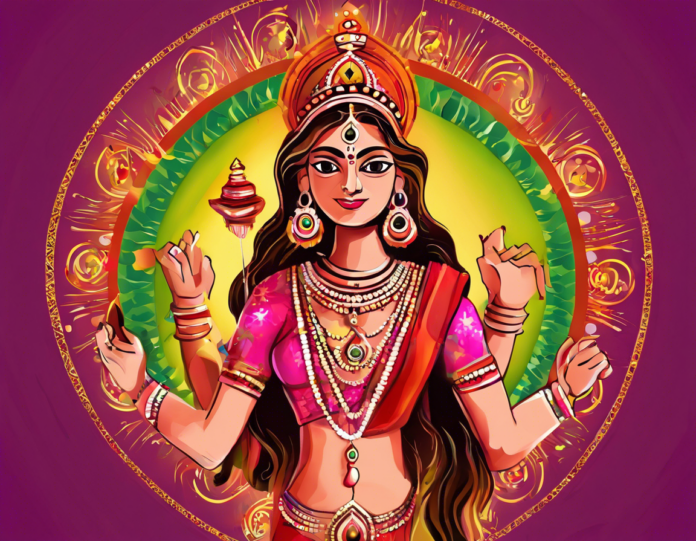Navratri, a nine-night festival celebrated with great zeal and enthusiasm by Hindus across the globe, holds immense cultural and religious significance. This auspicious festival is dedicated to the worship of Goddess Durga in her nine different forms, each day symbolizing a unique manifestation of power and devotion. Navratri, which translates to “nine nights” in Sanskrit, is a time for prayer, dance, music, and fasting. In this comprehensive guide, we delve into the festive traditions, rituals, and celebrations associated with Navratri.
Origins and Significance of Navratri
Navratri is rooted in ancient mythology and folklore, with different regions in India commemorating it in diverse ways. The festival symbolizes the triumph of good over evil, with the Goddess Durga vanquishing the demon Mahishasura after a fierce battle that lasted nine nights. Each day of Navratri is dedicated to one of the nine forms of Goddess Durga, known as Navadurga. Devotees seek the blessings of the Goddess for prosperity, peace, and protection from negative forces.
Traditional Practices during Navratri
-
Fasting: Many individuals observe fasts during Navratri, abstaining from grains, onion, garlic, and non-vegetarian food. Fasting is seen as a way to purify the body and mind while invoking the blessings of the Goddess.
-
Garba and Dandiya Raas: Navratri is synonymous with vibrant dance forms like Garba and Dandiya Raas, where people come together in colorful attire to dance in circles, depicting the joyous celebrations of the festival. The rhythmic beats of the music and the clinking of dandiya sticks create a lively and energetic atmosphere.
-
Golu Display: In South India, Navratri is celebrated as Golu or Kolu, where intricately arranged dolls and figurines are displayed on steps. This tradition signifies the divine presence in homes and community spaces, with each doll symbolizing aspects of mythology and culture.
Navratri Celebrations Around the World
While Navratri is predominantly celebrated in India, its popularity has spread to various parts of the world due to the Indian diaspora. Countries like the United States, the United Kingdom, Canada, and Australia witness grand Navratri events organized by local communities, featuring traditional performances, music, and culinary delights. These global celebrations help keep the festive spirit alive among individuals who are away from their homeland.
Popular Navratri Dishes
Navratri fasting includes a variety of vegetarian dishes that are not only delicious but also in line with the dietary restrictions observed during this period. Some popular dishes consumed during Navratri include:
- Sabudana Khichdi: A flavorful dish made with sago pearls, peanuts, and spices.
- Kuttu ki Puri: Deep-fried bread made from buckwheat flour, a staple during Navratri fasting.
- Aloo Jeera: Potatoes sautéed with cumin seeds and mild spices, served with roti or rice.
Navratri Dos and Don’ts
To make the most of the Navratri celebrations and rituals, here are some essential dos and don’ts to keep in mind:
Dos:
– Attend community celebrations: Participate in Garba and Dandiya events organized in your locality to experience the cultural richness of Navratri.
– Offer prayers: Visit temples and perform aarti to seek the blessings of Goddess Durga during this auspicious period.
Don’ts:
– Avoid non-vegetarian food: Refrain from consuming meat, fish, and eggs during Navratri fasting.
– Say no to alcohol: Maintain a pious atmosphere by abstaining from alcohol and other intoxicants during the festival.
Frequently Asked Questions (FAQs) about Navratri:
Q1: When is Navratri celebrated in 2024?
A: Navratri celebrations in 2024 will commence on Sunday, 29th September, and conclude on Monday, 7th October.
Q2: Can anyone participate in Garba and Dandiya Raas during Navratri?
A: Yes, Navratri celebrations are inclusive, and people from all backgrounds can join in the festive dances.
Q3: Why is fasting observed during Navratri?
A: Fasting is believed to cleanse the body and mind, and it is considered a way to strengthen one’s devotion and seek the blessings of Goddess Durga.
Q4: What are some common items used for Navratri home decorations?
A: Marigold flowers, mango leaves, earthen lamps, and colorful rangoli patterns are commonly used for festive decorations during Navratri.
Q5: Are there any specific mantras or prayers recited during Navratri?
A: Various mantras and stotras dedicated to Goddess Durga, such as the Durga Chalisa and Devi Kavacham, are chanted during Navratri for spiritual upliftment.
By immersing oneself in the vibrant traditions and practices of Navratri, individuals can experience the spiritual essence and cultural richness of this auspicious festival. Whether through dance, music, fasting, or prayers, Navratri offers a profound opportunity to connect with divinity and celebrate the triumph of good over evil.
